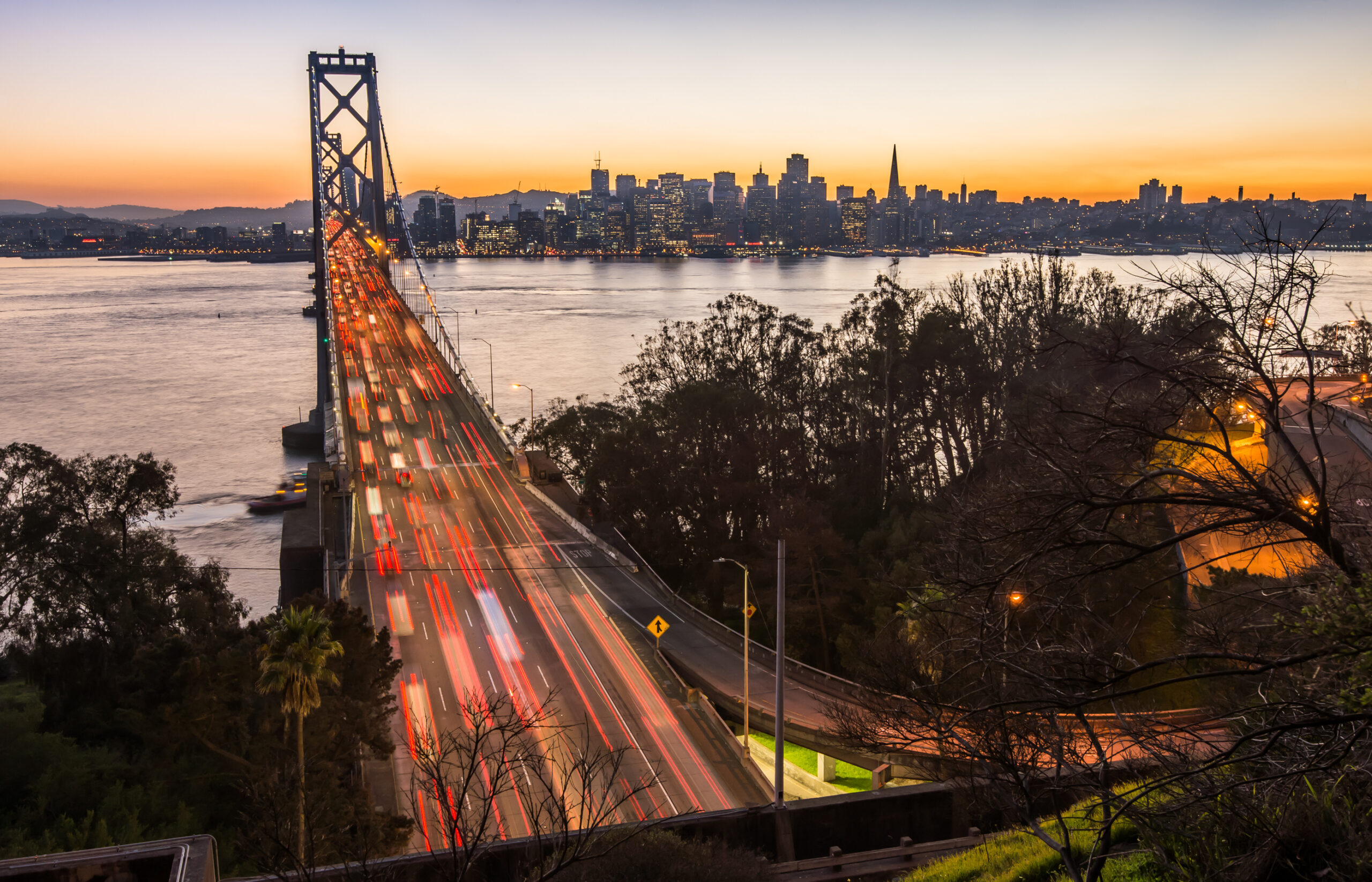The Standard’s Rachel Scheier looks into why there isn’t a bus-only lane on the Bay Bridge.
If you’ve ever inched across the Bay Bridge on an AC Transit bus at rush hour, you might have thought, “There must be a better way.” Why not reward public transit riders by speeding them across in their own dedicated lane?
If so, you aren’t the first. In fact, local politicians and transit advocacy groups have been kicking around the idea of a public transit lane on the Bay Bridge for decades. The last time they seriously considered the issue was in early 2020, when then-state Assemblymember Rob Bonta (now California’s attorney general) introduced a bill to do just that after an Oakland resident pitched the idea to him on Twitter. The legislation quickly drew backing from transit officials and advocacy groups but then fizzled almost as quickly a few months later amid the chaos of the pandemic.
But there are other more practical reasons why a bus lane on the bridge remains a commuter fantasy. In short, local transportation officials worry that creating a transit-only lane would cause more problems than it would solve.
“There are not enough Bay Bridge lanes, not enough buses and not enough bus riders for a bus lane on the bridge to make sense,” said John Goodwin, a spokesman for the Metropolitan Transportation Commission, which funds and operates the region’s six state-owned bridges.
Goodwin explained that the bridge has just five lanes going in each direction, each of which can handle at most about 1,900 vehicles per hour. “I’m not sure there are 1,900 buses in the entire Bay Area transit fleet!” he said.
The bottom line is that thousands more drivers—around one-fifth of bridge vehicles—would need to switch to taking the bus in order to keep traffic flowing smoothly.
Moreover, the reason the Bay Bridge is such a slog isn’t the bridge itself so much as the complex tangle of freeways that feed onto it, with traffic coming from all directions. At the Bay Bridge, the “pipe” through which traffic flows narrows from 20 lanes at the toll plaza down to just five. Buses getting on Interstate 80 at the Powell Street on-ramp in Emeryville get stuck in a traffic bottleneck, while those on Interstate 580 also experience gridlock since the diamond lane for buses and other high-occupancy vehicles doesn’t start until just west of the MacArthur Maze.
If officials designated a bus-only lane under current conditions, experts say that it could actually make all this traffic getting to the bridge much worse, potentially causing it to spill onto the streets of Oakland and other surrounding cities.
Goodwin said the Metropolitan Transportation Commission is working to address these problems with its Bay Bridge Forward projects, which are focused on extending the bus/carpool lane on I-580 back to the Broadway overcrossing and repurposing the outside lane of I-80 between the Powell Street interchange and the toll plaza to serve as a high-occupancy vehicle or HOV lane. Once they’re on the bridge, Goodwin added, buses have a dedicated off-ramp to the Salesforce Transbay Transit Center. For eastbound trips, they also have a dedicated on-ramp from the Transit Center.
But none of this has stopped public transit advocates from pushing for a bus lane. Back in the early 1960s, they actually succeeded. In 1962, with congestion worsening on the bridge even with the Bay Area’s population at around half of what it is today, officials repurposed one of the lower-deck lanes as a dedicated bus lane for Alameda-Contra Costa Transit District buses going against the normal flow of traffic. It lasted only a year.
Today, crossing the Bay Bridge—especially during the morning commute from the East Bay into San Francisco—is more of a slog than ever. Hopes that an easier commute might be a silver lining of the corporate apocalypse that’s hit Downtown San Francisco have mostly been in vain.
Even though overall traffic on the Bay Bridge is down some 10% from before the pandemic, morning travel speeds between Treasure Island and the Fremont Street exit are more than 30% slower than they were four years ago, according to congestion tracking data.
AC Transit continues to support the idea of a bus-only lane.
“Traffic continues to plague our roadways, despite remote-hybrid work or perhaps because of these new work schedules, particularly into San Francisco,” Robert Lyles, a spokesman for AC Transit, said in a statement. “Transit-only lanes … have improved travel times, ease congestion, and provide a lifeline for those who rely on our bus service.”
